The idea behind a trip to Ahobilam, was out of the blue, out of some casual talk, idle browsing on internet, and then sealed by Andhra Pradesh tourism. And some moments of reading travelogues with accounts of trek experiences, gave us the required brain waves to extend the Kurnnol trip and take a long detour to cover Ahobilam. The road trip to Ahobilam, wasn’t very appealing, the roads were desolate, but with a rustic hue.
Let me accept here, I am not a great temple-goer person. I study temples, there architecture, the finesse in their design, the rich carvings on the pillars, the entire character. The art and design put on display, turns these temples into an age old chronicler for me. I love the touch and feel of the old rocks, the ever-lasting gleam on the sculptures, the floral designs following some geometric manner and the endless tales narrated to on-lookers through carvings; appeal to me.

Upper Ahobilam temple
Before planning to Ahobilam, I had almost no idea of what was in display for me. I was inspired of the trek to the Upper Ahobilam temples. Ahobilam has two main temples – Diguva (Lower) Ahobilam, located at the foothills of the Nallamala range, housing the Prahalada Varadha Temple and Eguva (Upper Ahobilam) located in the hills on an 8 km ghat road and houses the Ahobila Narasimha temple. There are 8 other temples for Lord Narasimha and two other spots associated with the Hindu Mythology – the entire set forms part of the Ahobilam trek. While 4 of the temples are accessible on road, for the other 5, one needs to trek a total distance of 32 kilometres.

Lower Ahobilam temple
The lower Ahobilam didn’t sound very inspiring to me at first, though my guide assured me of the rich surprise waiting for me at the temple. I gleefully smiled; anyway my plan was to start the trek only after lunch. Fixing the lower Ahobilam in time between the breakfast and lunch sounded just the right thing to me. I had no idea what waited for me at the Lower Ahobilam. The entrance was humble but the interiors were just the thing I wanted – pillars in four rows with the inner sanctum in the centre, mythological tell-tales carved on pillars, the splendidly designed roof, exquisite sculptural embellishment, grand dimensions still commanding harmony with every corner expressing an animated celebration of life. The major theme was obviously drawn from the tales of Narsimha incarnation of Lord Vishnu. The richness in art and sculpture in the temple, kept me in a camera frenzied state for over a couple of hours.
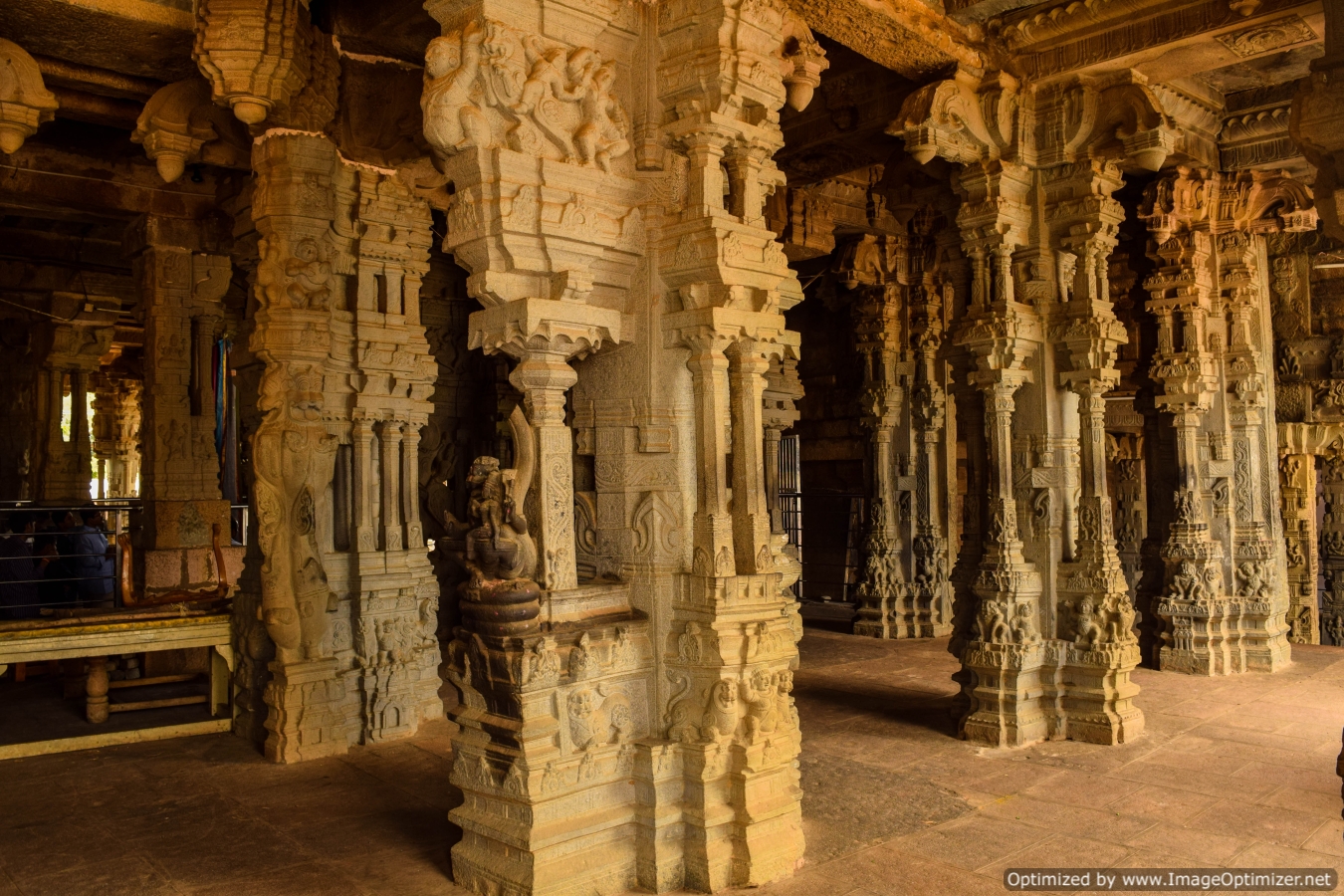
Rich carvings on pillars of Lower Ahobilam temple
The interesting bit of these temples is the different mood of Lord Narsimha, Ugra Stambha at Ahobilam is said to be the place where Lord Narsimha gave his appearance. At Jwala Narsimha temple, he got most furious and killed the Asura. He appears with his consort Lakshmi in Kroda temple and he is graceful at Malola.
- Lord Narsimha idols at Lower Ahobilam temple

Carvings on Lower Ahobilam temple

The pillared side-walls are important feature of Lower Ahobilam temple’s architecture
I started for other temples only after lunch, a common route to everyone visiting the nine-shrines of Ahobilam, but for the temples not situated on easy points, it makes a good trek through dense forests on hills. The toughest being the trek to Ugrastambham and Pawananarsimha temples. The first hop at Upper Ahobilam, takes you to beatific South Indian temple architecture and rich designs. Coming out of it, it appears that one is deported to a different land altogether. A small rapid flowed next to a rocky platform, further to it, gates of Nalamalla forests range opened. The trek began with the different temples acting as halting points to hydrate yourself. The Malola Narsimha and Prahlad Betika are on lower altitudes, more like spiritual halts. The rest of the way is through boulders, along the short stream; it is here that the view of the Nalmalla range gets clear, hills placed like stack of cards in a row, towering high, adorned with almost impenetrable forests.
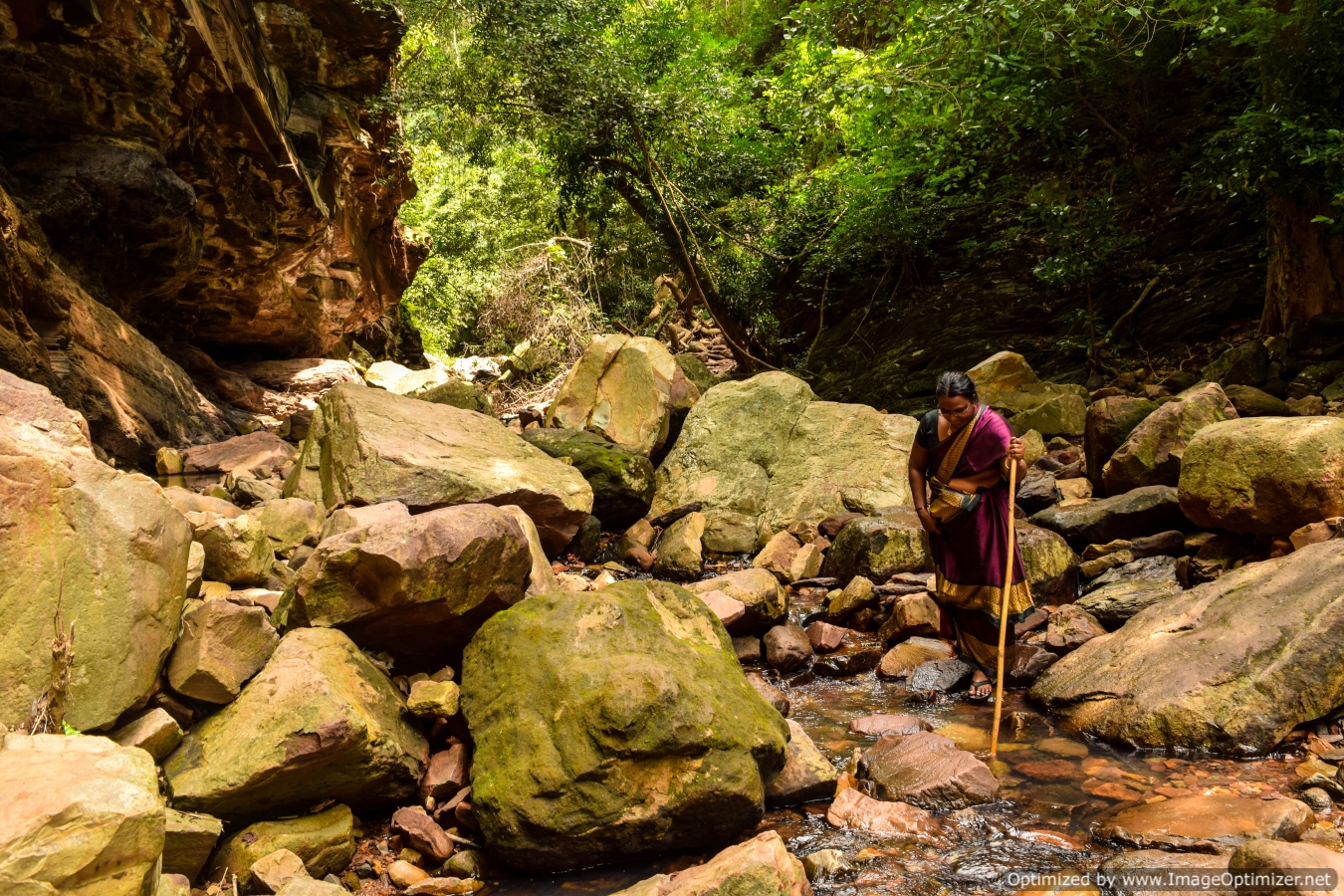
As the Ahobilam temple trek begun
Excitement to reaching the top got renewed with every curve. The silence of the jungle spelled magic on me. I was amazed to see some pilgrims on barefoot, crossing the streams, the jungle trek and the rocky patches, all on barefoot. Their conviction gave me more strength to keep moving. At certain junctures, the trek is arduous, like the 3 km patch from the Jwala Narsimha to the Ugra Narsimha, a rather steep patch which takes you to the top of the hill. From the top, the valley looks like a slice of cake with extra greens. The air is pure, light and soothing, carrying with it an incredible feeling of oneness. The feeling of being at the top, in the company of birds and flowers and everything coloured in your favourite colours and then you look down, to see how much you have covered, through the rough patches, crossing the streams and the rapids, the numerous steps and all the sights, smells and voices converge to create the soul-curry of the joy only a trek can give. Out of the shell to see a different world – far quieter, far greener and far mesmerizing than the one we live in. The whole line of nine temples, the different moods of Lord Narsimha, the always inspiring story of Prahlad, the mystic of mythology and then the devout devotees who cover the entire trek barefoot, enough stories to carry back.

Ahobilam trek in the Nallamala forest range
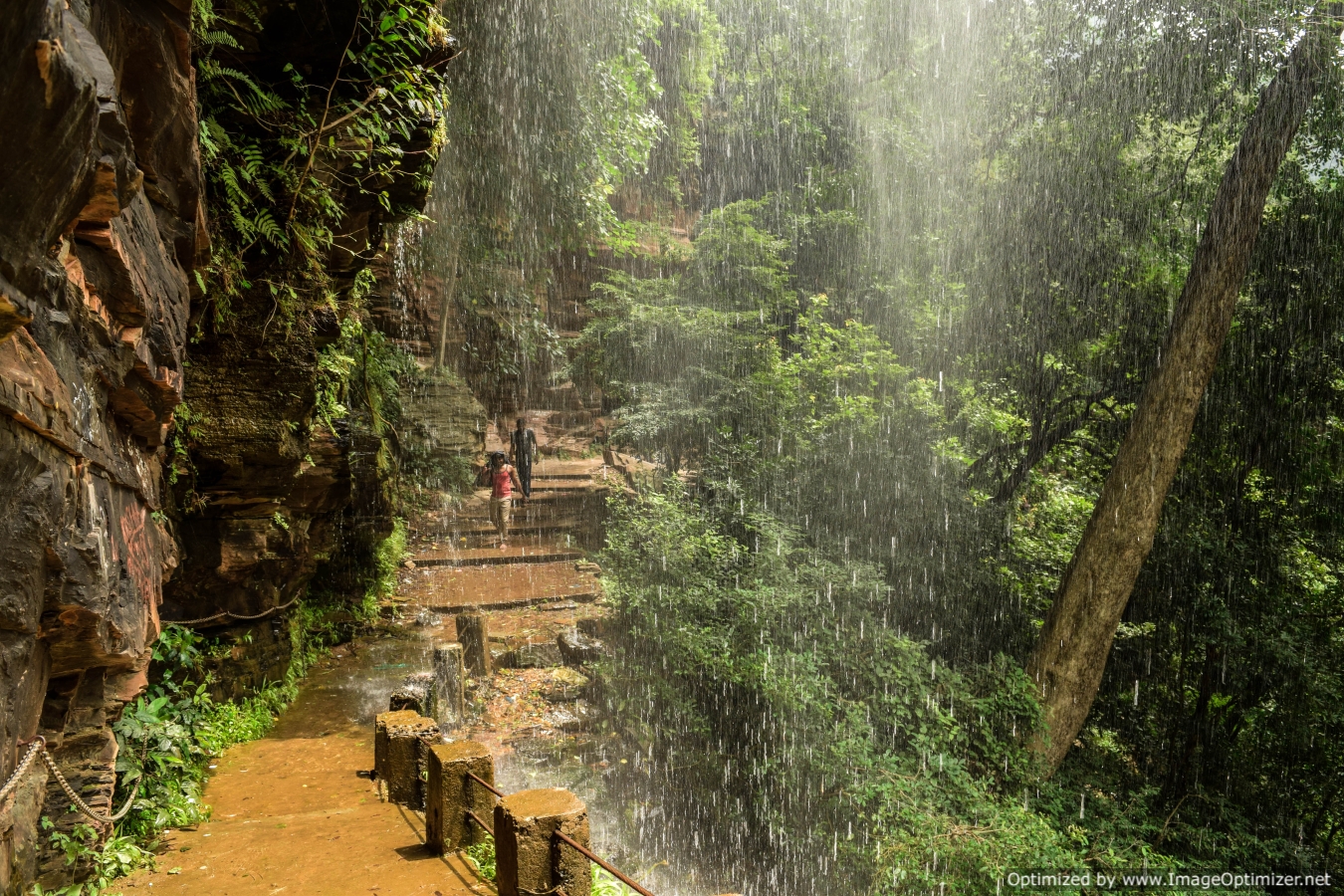
Crossing the waterfall to reach Jwala Narsimha temple
I saw a group who had come to camp an entire night on the top of the hill. My plans were different, I had to return and then off to Kurnool. May be some day.
Fast facts: Ahobilam is almost three hours from Kurnool. The nearest railhead is Nandyal, but I will suggest you to take this journey from Kurnool which is far better connected to major stations than Nandyal.
P.S – “No God, human, animal or demon can kill me. No Animal, no human can kill me by hand or by any weapon. I shall die neither at daytime nor at night, nor on the ground or in the sky. Neither inside any residence nor outside.” Such was the blessing Asura Hiranyakashyap received from Lord Brahma.
Such powers made him almost indestructible and made him assume himself the Lord and follow torture, barbarism and cruelty under his rule. To relieve Earth from his cruelty, Lord Vishnu, took the Narsimha (half human- half lion) incarnation, and came upon the call of little Prahlada, son of the Asura himself. Hiranyakashyap was killed by this Lion-Man by his bare nails at dusk at the door frame holding him in his lap.


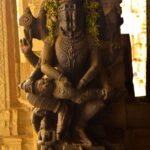


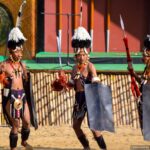
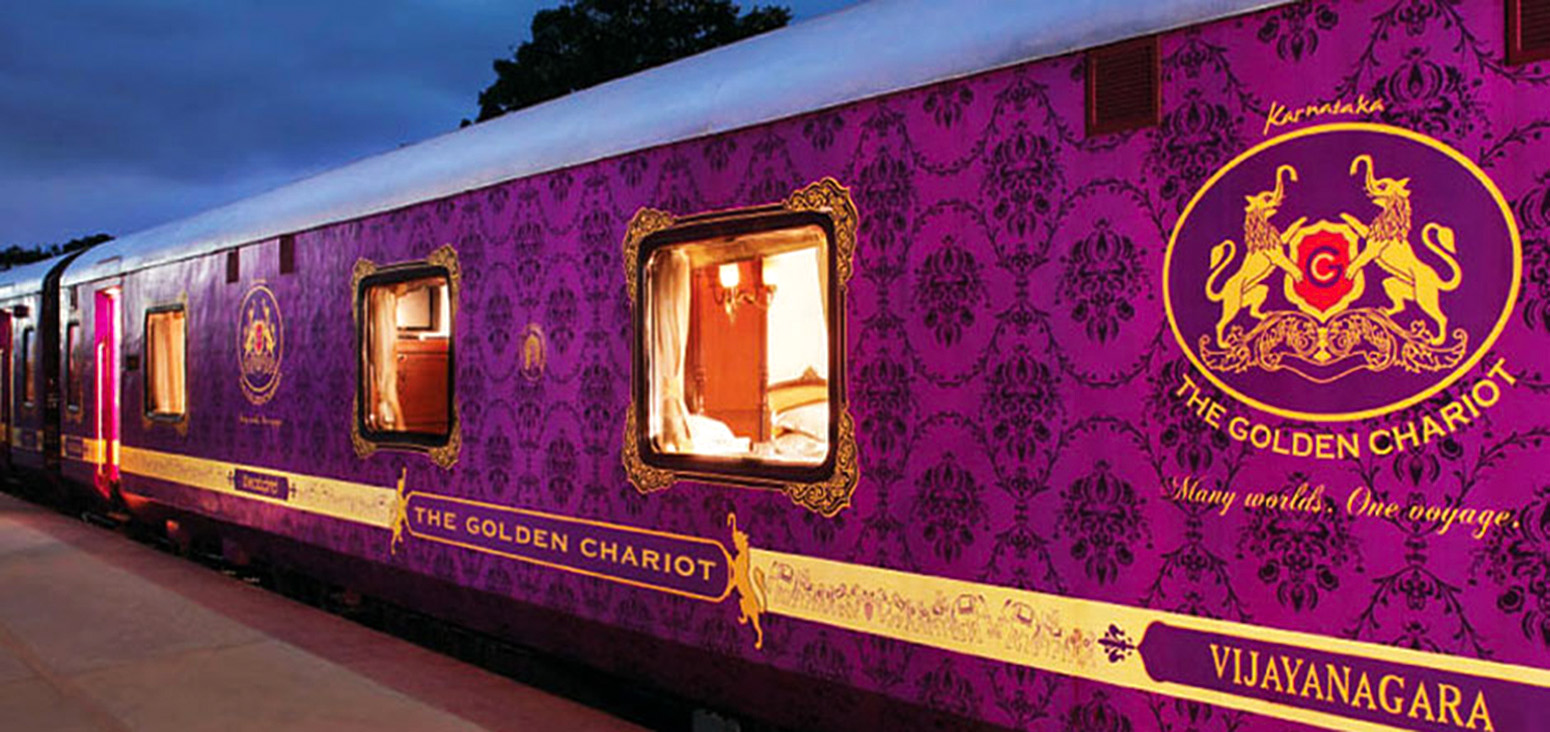

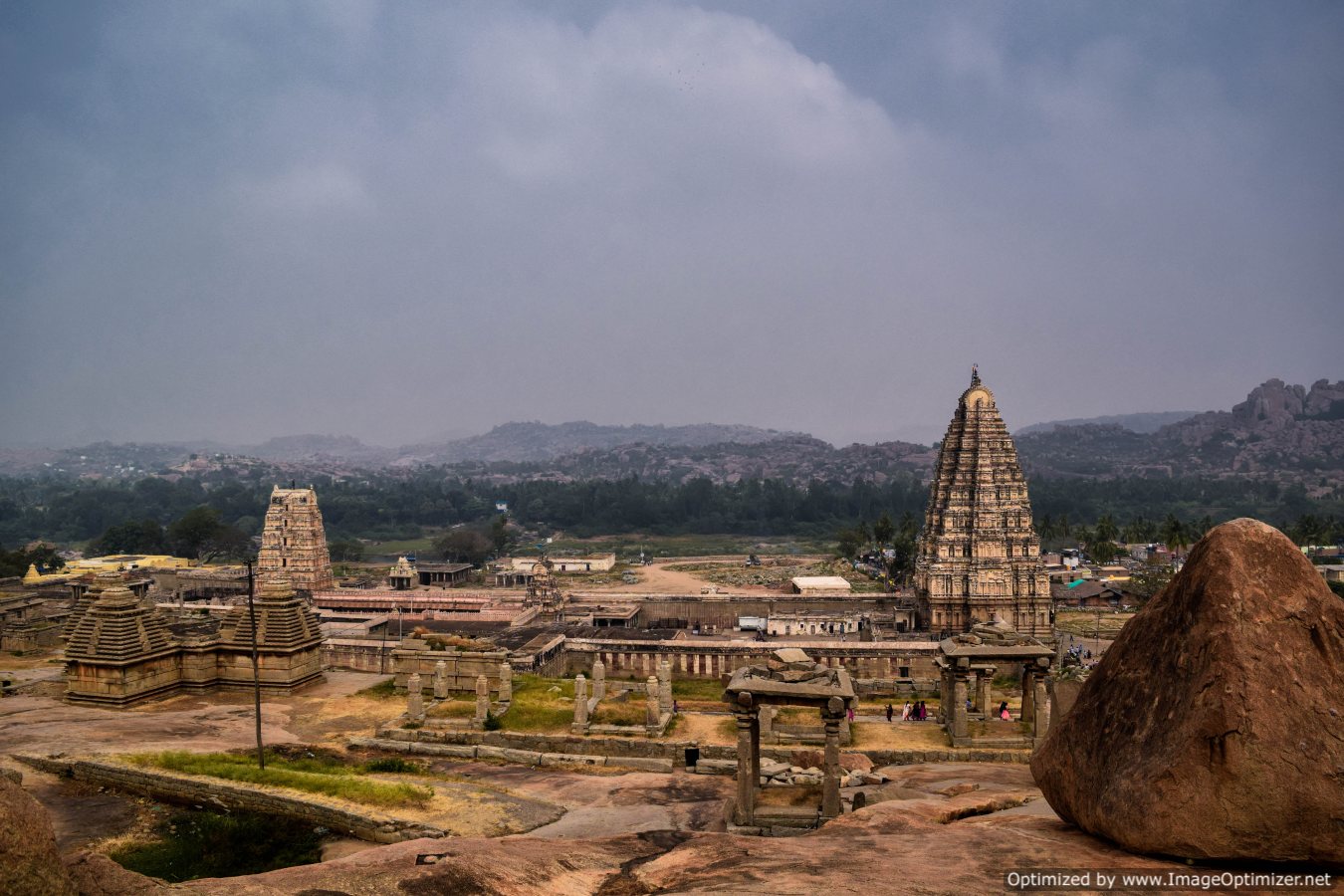

Sir you say it’s 32 km and still say that post lunch you could finish it. It’s confusing. Can you pls clarify how much is actual trek distance?
It’s not 32 kms, it’s definitely a typo error. Thanks for pointing. I’ll check and rectify that error.
It still says 32 KMs 🙂 no worries can you tell me what’s approx total distance of trek.
Oh it should be 6-7 Kms – thanks for reminding I shall check and update the article